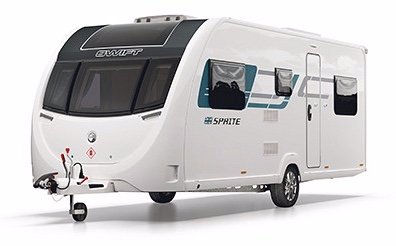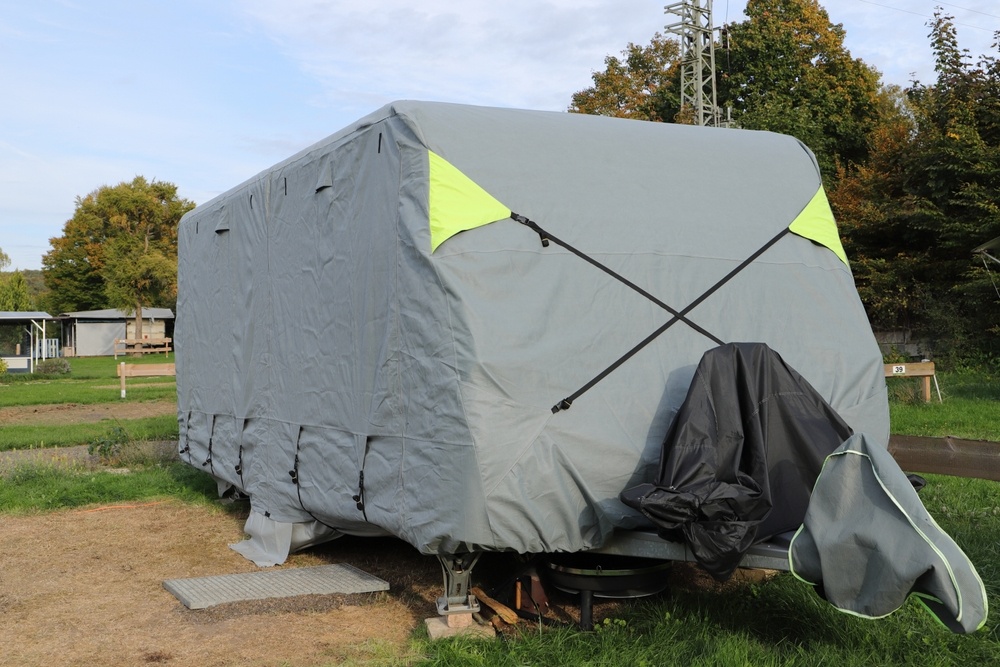Should you use a pressure washer to clean your caravan?
When not in use, it’s often thought to be a good idea to protect your caravan from the elements and harsh environments. Many people put a protective cover on their caravan, for example when it’s kept in storage, to stop it getting dirty or dusty, but should you actually do that? Below we look at some of the pros and cons of using a cover, so that you can decide for yourself if it’s something you should be using, or if you are better off without one.

The pros of using a caravan cover
General protection from the elements
A high-quality cover protects your caravan from various weather conditions, including rain, snow, and UV rays. It can prevent water ingress and protect against sun damage, which can fade paint and degrade the seals. It might also reduce the risk of damp and mould occurring, however there is a con associated with this - see below!
Preventing dirt build-up
Covers keep dust, bird droppings, tree sap, and other debris from accumulating on your caravan, which in turn hopefully reduces the need for frequent cleaning and maintenance.
Pest deterrence
By covering your caravan, you can deter pests like insects and small animals from making a home in (or on) your vehicle.
Enhanced security
A covered caravan is less likely to attract the attention of thieves or vandals, as it is not immediately apparent what lies beneath the cover.
Resale value
By protecting the exterior of your caravan, a cover can help maintain its appearance and structural integrity over time, thus preserving its resale value.
The cons of using a caravan cover
Initial and ongoing costs
High-quality covers can be expensive, and the investment might seem a little steep, especially if you need to replace the cover periodically due to wear and tear. Also, they need to actually protect the caravan to be worth it. Something like this (below) might protect the roof, but would it actually protect the seals and sides? Possibly not.
.jpg?width=5184&height=3456&name=shutterstock_1585242445%20(1).jpg)
Potential for damage
Poorly fitting or low-quality covers can cause abrasion damage to the caravan’s paintwork, if they flap in the wind. If you choose to use a cover, make sure you fit it correctly and secure the fastenings properly.
Trapped moisture
An interesting one, this! Linked to the pro we listed above, a cover can provide protection against damp and mould. However, if the cover is too tight or not made from a breathable fabric, covers can actually trap moisture underneath - which leads to a build up of condensation and potentially mould and mildew issues, which kind of defeats the object. Not ideal!
It’s a bit of faff!
Putting on and taking off a cover can be time-consuming and physically demanding, particularly for larger caravans. This task might require multiple people and can be challenging in windy conditions. When not in use, the cover itself needs to be stored, which can be a hassle if space is limited. There might be an issue with having limited access, as using a cover can restrict getting in and out of your caravan. Every time you need to retrieve something or do any maintenance, you have to remove the cover, which can be inconvenient.
There we have it with the main pros and cons. Deciding whether to use a cover for your caravan involves weighing up the benefits of protection and longevity against the potential downsides of both inconvenience and also causing yourself additional issues, such as the chance of creating damp. For many caravan owners, the peace of mind that comes with knowing their vehicle is shielded from the elements and potential external damage makes the investment worthwhile. However, it’s essential to choose a high-quality cover that fits well, and to consider the practical aspects of both using and storing the cover.
Ultimately, the decision comes down to your specific needs, the climate in which you store your caravan, and how often you use it. By carefully considering the pros and cons, you can make an informed choice that is the best thing for you and your circumstances.








.jpg?height=200&name=shutterstock_1521572708%20(1).jpg)